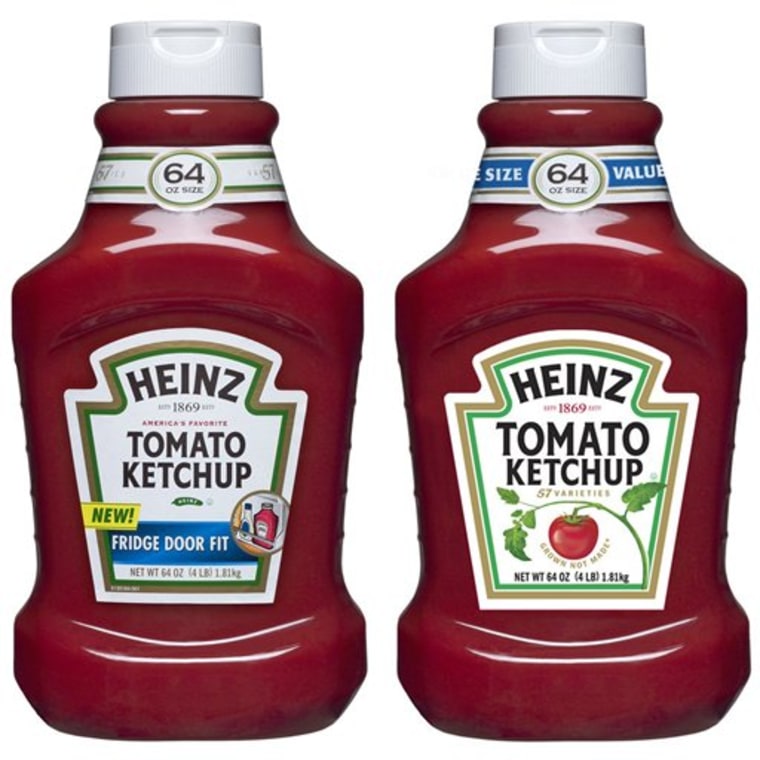Goodbye gherkin, hello tomato. After more than 110 years, H.J. Heinz Co. is giving the tomato top billing on its namesake ketchup and bumping the pickle from the label of one of America's most iconic brands.
Bottles of the market-leading ketchup with the new label are shipping now and should arrive in stores next week. The image of a single, large, vine-ripened tomato is much larger than the pickle it's replacing and better reflects what's inside the bottle, said Noel Geoffrey, director of ketchup for Pittsburgh-based Heinz.
Playing up ketchup's natural roots also feeds into consumers' growing desire for more wholesome, natural foods, analysts and the company said. The new label includes the tagline "Grown not made."
"We really felt that the tomato is the hero of ketchup, and it was the right time to make the switch on our label," Geoffrey said.
It will take three to five months as stock on grocery shelves and in restaurants is replaced.
Consumers will hear about the switch. The company says it's planning the largest campaign it has undertaken since the 1980s with print and television ads to start airing this spring to coincide with the opening of prime ketchup season, when consumers eat it on grilled foods like burgers and hot dogs, Geoffrey said.
No pickles in ketchup
The pickle is an integral part of the Heinz company story, and the decision to retire it wasn't easy, she said, even though there are no pickles in Heinz ketchup.
Founder H.J. Heinz used a "pickle pin" to attract attention to his booth at the World's Fair in Chicago in 1893. The pins were popular, and the branding stuck.
The company still gets as many as 15,000 pickle pin requests a year through its Web site and a consumer hot line.
Pickle-lovers, fear not: The tiny gherkin will remain on other Heinz products, including mustard, vinegar and chili sauce.
"It is a part of our company heritage," Geoffrey said.
In testing, mothers — the target buyers — said having the tomato on the label helped them make the connection with the product's main ingredient. Mothers want to have more information about the foods they're serving their families and they want to feel that the foods are natural and wholesome, Geoffrey said.
Heinz, the world's largest processed tomato company uses only tomatoes grown with its so-called HeinzSeed seeds for its ketchup. The HeinzSeed program supplies six billion hybrid tomato seeds a year developed to produce tomatoes that are disease-resistant and to produce a higher yield.
Sets Heinz apart
"I think that is a positive, comforting thing to know that a food she serves frequently is a wholesome thing grown from seeds that our company controls," Geoffrey said.
Lynn Dornblaser, a trend expert for research firm Mintel International, said the tomato image plays into modern, more educated consumers' desire for a better understanding of what they're eating, whether for health, safety or just knowledge's sake.
Along with the "Grown not made" tagline, the new branding sets Heinz apart, she said, and could help it retain consumers who might trade down to private label brands. Makers of branded food face a growing threat from private-label brands, which often cost less, as consumers look to save on their food costs.
Playing up a product's wholesomeness could help counter that competition, Dornblaser said. But any time companies change branding, especially for storied marks like Heinz ketchup, there are risks.
"In general companies really do have to take care when it comes to how they modify their brands or how they modify the messages because — if it's not done carefully — it could result in consumers being confused and therefore choosing something else," Dornblaser said.
